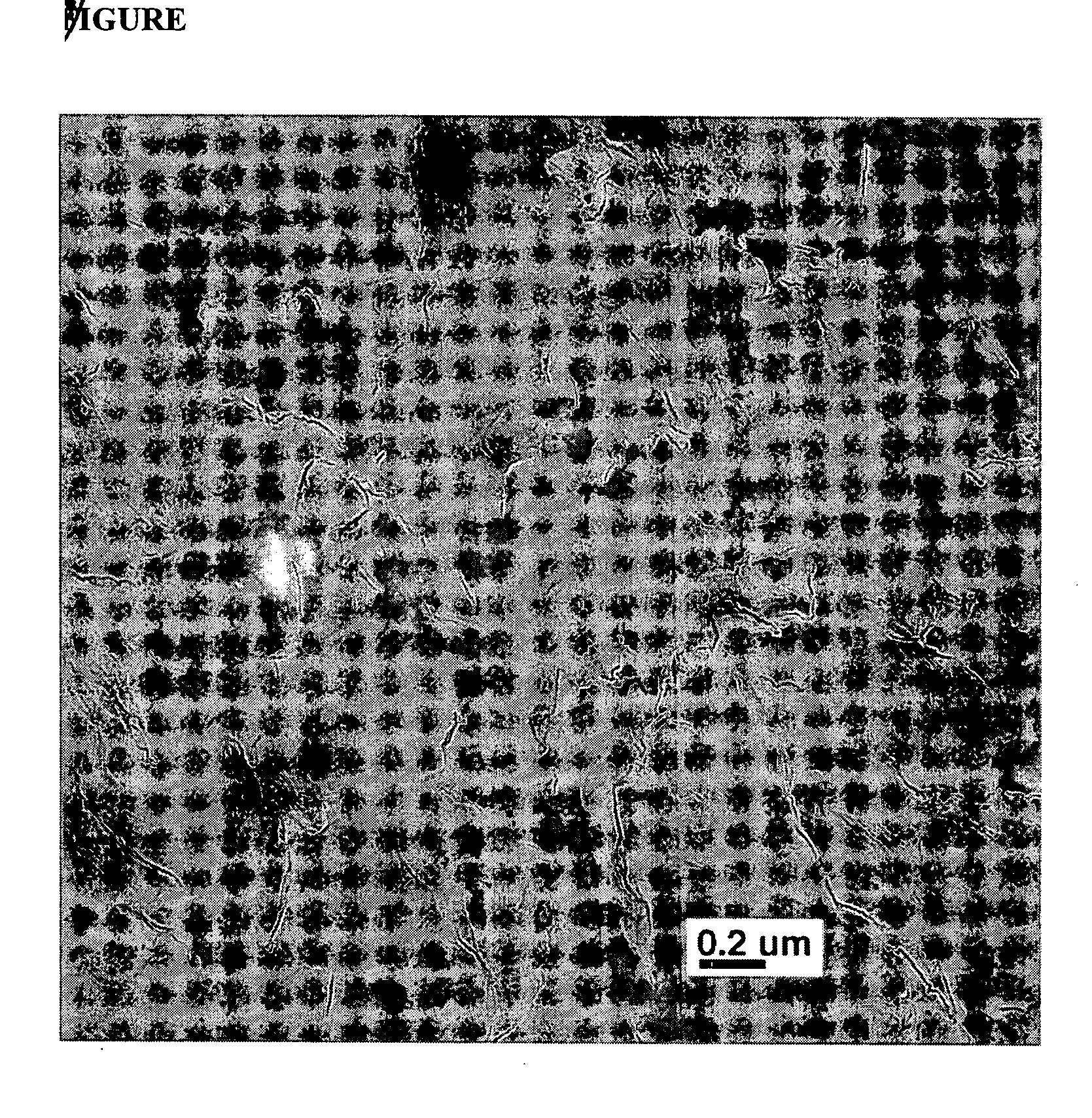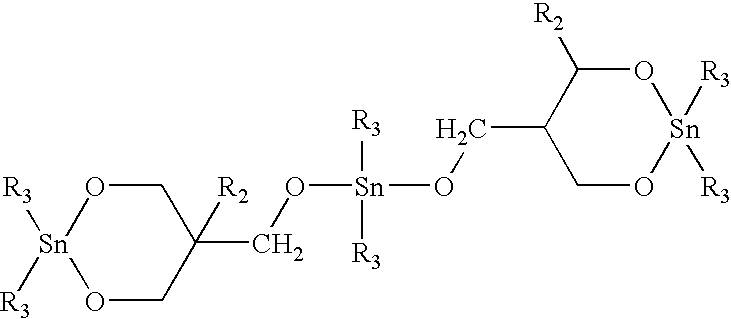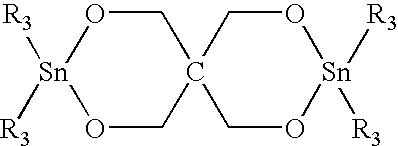Polymers of macrocyclic oligomers containing highly expanded graphite
a macrocyclic oligomer and graphite technology, applied in the field of polymers derived from macrocyclic oligomers containing expanded graphite, can solve the problems of unsuitable use of macrocyclic oligomers in e-coat processes, clays have proved difficult to disperse into the macrocyclic oligomer, and the risk of premature polymerization and thermal degradation of the oligomer is reduced, and the amount of solvent can vary significantly.
- Summary
- Abstract
- Description
- Claims
- Application Information
AI Technical Summary
Benefits of technology
Problems solved by technology
Method used
Image
Examples
example 1
[0078] 50 grams of cyclic butylene terephthalate oligomer (CBTO) and 2 grams of GRAFTech® GPB expanded graphite worms are dried in a vacuum at 100° C. for 2 hours. The expanded graphite worms have a BET surface area of 34 m2 / g.
[0079] The dried CBTO is melted in a thermostatically controlled melting pot at 170° C. The expanded graphite worms are added and mixed into the oligomer with a rotor stator. The mixture is cooled, powdered and allowed to dry overnight at 100° C. to form an oligomer / expanded graphite blend containing about 3.8% by weight of the expanded graphite.
[0080] 50 grams of the powdered blend are added to a HAAKE blender at 250° C. and held at that temperature for two minutes to allow the oligomer to melt. At that point, 0.160 g of butyltin chloride dihydroxide catalyst (0.3 mol %) is sprinkled into the blender and the oligomer is allowed to polymerize to polybutylene terephthalate (PBT) for 10 minutes. The resulting composite is then removed, grounded into granules a...
example 2
[0081] 47.5 grams of cyclic butylene terephthalate oligomer (CBTO) and 2.5 grams of GRAFTech GPB expanded graphite worms are added to 300 ml of distilled water in a beaker and stirred on a hot plate 2 hours at 170° C. The water remaining after the heating step is removed by heating in a vacuum oven at 100° C. overnight. The resulting oligomer / expanded graphite blend (containing 5% by weight expanded graphite) is polymerized in the manner described in Example 1 to obtain a composite exhibiting a volume resistivity of 2.63×103 ohm-cm.
example 3
[0082] 47.5 grams of cyclic butylene terephthalate oligomer (CBTO) and 2.5 grams of GRAFTech® GPB expanded graphite worms are dried in a vacuum at 100° C. for 2 hours. The dried materials are then added to approximately 100 ml of chloroform in a flask and sonicated in an ultrasonic bath at 100 watt power for 4 hours. The solvent is then removed by blowing it off with nitrogen gas and dried in a vacuum oven overnight at 40° C. The resulting oligomer / expanded graphite blend (containing 5% by weight expanded graphite) is polymerized in the manner described in Example 1 to obtain a composite exhibiting a volume resistivity of 2.34×103 ohm-cm.
PUM
| Property | Measurement | Unit |
|---|---|---|
| heat distortion temperature | aaaaa | aaaaa |
| temperature | aaaaa | aaaaa |
| temperatures | aaaaa | aaaaa |
Abstract
Description
Claims
Application Information
 Login to View More
Login to View More - R&D
- Intellectual Property
- Life Sciences
- Materials
- Tech Scout
- Unparalleled Data Quality
- Higher Quality Content
- 60% Fewer Hallucinations
Browse by: Latest US Patents, China's latest patents, Technical Efficacy Thesaurus, Application Domain, Technology Topic, Popular Technical Reports.
© 2025 PatSnap. All rights reserved.Legal|Privacy policy|Modern Slavery Act Transparency Statement|Sitemap|About US| Contact US: help@patsnap.com



